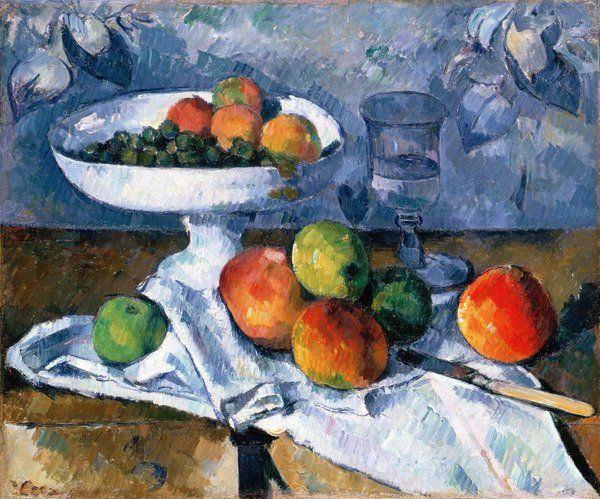What could be better, on Christmas Eve, than to visit the nativity scenes from a masterpiece of Western art--the Scrovegni Chapel in Padua, Italy. Just to enter the little chapel and see the view pictured above takes your breath away. The frescoes that cover every surface of the Chapel were painted by Giotto de Bondone (a.k.a. "Giotto"). They were done over 700 years ago--and they are as beautiful today as when they were first created.
 |
| The Annunciation |
Giotto's fresco cycle tells the story of God's promises and the life of Jesus. The nativity portions of the frescoes start with the Annunciation (above). They show the Angel Gabriel coming to Mary with the message that she would bear the Son of God. To quote from Madeleine L'Engle's book, "What an amazing, what an impossible message...! Possible things are easy to believe. The Glorious Impossibles are what bring joy to our hearts, hope to our lives, songs to our lips."
 |
| The Visitation |
Next we see Mary go to visit her cousin Elizabeth. Elizabeth was also with child, and her unborn child recognized the baby Mary was carrying, and leaped for joy. Another Glorious Impossible event!
 |
| Nativity (above), and Detail (below) |
Jesus was born in a stable in Bethlehem. Nearby, shepherds with their flocks were visited by an angel, telling them of the birth. I love Giotto's depiction of this story in the fresco above, showing the host of heavenly angels, singing to the glory of God. And I can't resist mentioning how Giotto took a huge leap forward in the history of art by depicting these figures in such a natural, human way. No more stylized figures. Here we see very human gestures and expressions. The great art critic John Ruskin said that Giotto painted "the Madonna, Saint Joseph and the Christ, yes, by all means...but essentially Mama, Papa and Baby."
 |
| The Adoration of the Magi (above), and Details (below) |
Now we come to the Adoration of the Magi. What a gorgeous fresco, and how full of life! Madeleine L'Engle writes that the Magi (or wise men) were serious scholars who studied the heavens and movements of heavenly bodies. Each came to Judea at the time of Jesus' birth because of what he had read in the movement of the planets and stars. It is very fitting that this fresco shows a comet streaming through the heavens. The wise men believed that something happening in Bethlehem would change the world, and they brought gifts of gold, frankincense and myrrh.
Above many of these frescoes we see the stars in their courses. Echoing the individual frescoes, the ceiling of the Chapel shows a vast expanse of sky, punctuated by beautiful stars. Their brilliance shines above all, and reminds me of the majesty of creation. Stirring thoughts during this advent season!









%20copy.jpg)






































